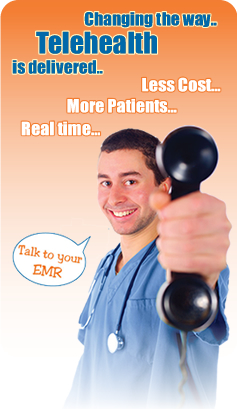
Texas Software Vendor Aims to Change the Way Chronic Disease Management Is Delivered
HomeCare Interactive, LLC, has introduced what it calls a new model for telehealth technology. The "HomeCare Interactive® Telehealth 360" replaces the familiar data input/out telehealth box with the home telephone to exchange information directly with an electronic medical record (EMR) in real time.
The Galveston software company expects this model of telehealth technology will allow more patients with chronic diseases to be managed at lower overall cost. It relies primarily on off-the-shelf vital sign equipment such as blood pressure, blood sugar and pulse oximeter measurement devices, eliminating the up-front cost of a separate telehealth monitor.
"Medicare and most insurance companies have long resisted the idea of compensating providers for the cost of equipment involved in home telehealth programs, an apparatus that is eliminated in this model," explained HomeCare Interactive president Amer Taha.
The HomeCare Interactive® Telehealth 360 Model utilizes a home or a cell telephone and off-the-shelf vital signs equipment to reduce cost but it maintains important telehealth features such as instant alerts sent by the system to inform home care clinicians, disease management program nurses or the patient's physician about out-of-range values.
As with traditional home telehealth equipment, these alerts are immediate, initiated as soon as patient data is received in the EMR. Alerts are delivered in the form of text messaging with the option of secured e-mail and faxes to the persons involved in the patient's care. Thus, the HomeCare Interactive® Telehealth 360 Model also eliminates the need for a clinician to continuously monitor incoming data since out-of-range values are delivered as need dictates.
Using a home telephone and off-the-shelf vital sign equipment reduces several costs, including installation and training, replacement, equipment insurance and maintenance. For hospitals, savings arise from controlling returns with Medicare's 3-day DRG payment limitation. For home health agencies, the system can cut down on the number of nursing visits while increasing the frequency of patient contact.
Patient satisfaction levels are high when using a familiar device such as the telephone that does not intimidate or require training. Patients using the system say they look forward to their next telephone call, reminding them someone is watching them closely. Health care provider satisfaction levels go up as well, according to Taha, when they receive immediate patient alerts without having to sit and watch a monitor, see rehospitalizations lowered and care quality increased.
Telehealth for chronic disease management has been around for over a decade, starting with audio/video monitoring equipment connecting to a central station through dial-up connections and manual download of patient vital signs, to current store and forward technology where a digital box installed in the patient's home forwards data to a server at a scheduled time of day to be received and interpreted by an office clinician when available.
Healthcare Interactive, with its Telehealth 360 model, is one of a handful of available systems vendors arguing it is time to move beyond the in-home device. These models enable real time data exchange with the EMR, free clinicians from checking reports on a screen and help clinicians provide immediate intervention which, in some cases, can prevent a further decline in patient health.
Taha said his company, HomeCare Interactive, LLC, strives to increase technology use with the goal of improving quality of care and patient outcomes. In 2002, the Company developed HomeCare Interactive® a home health EMR software system, the first, Taha says, to introduce a physician portal to the home heath industry. The company has also introduced HomeCare Interactive® TV in 2005, a tool for in-home patient education and chronic disease remote monitoring.
www.homecareinteractive.net




